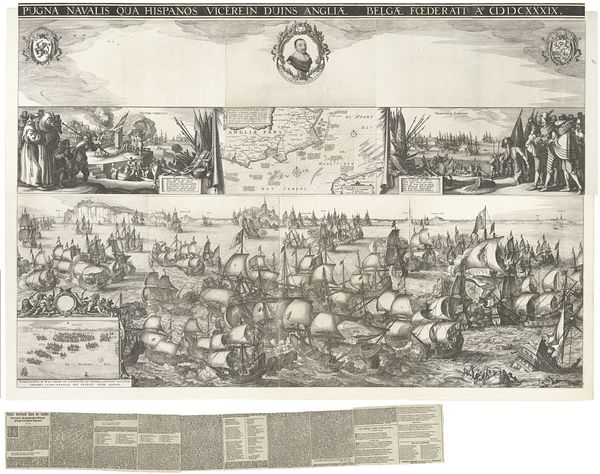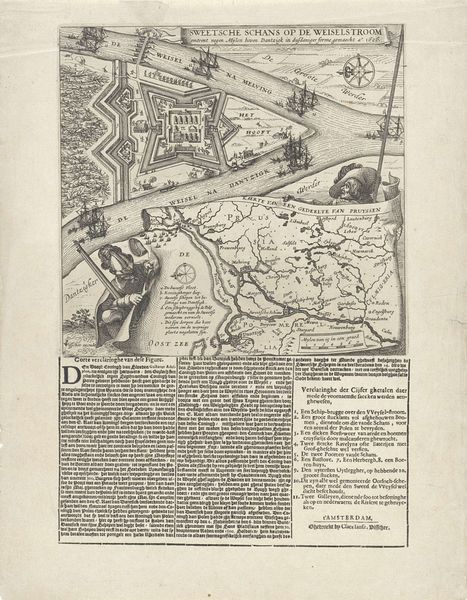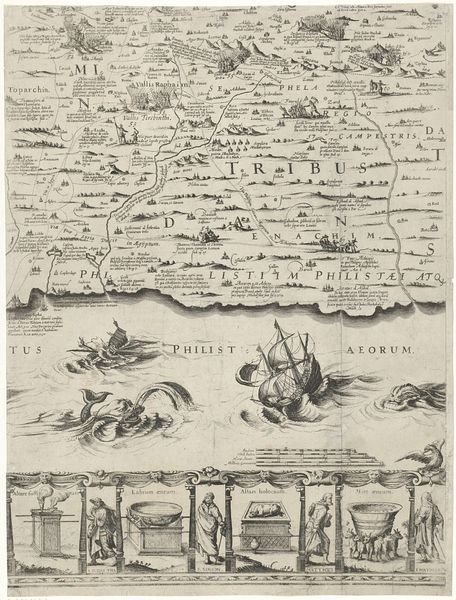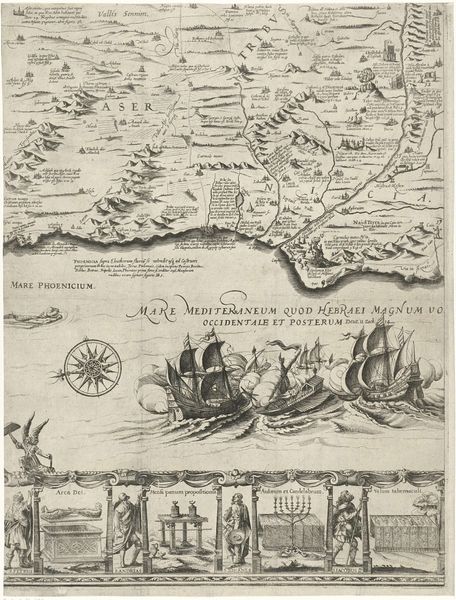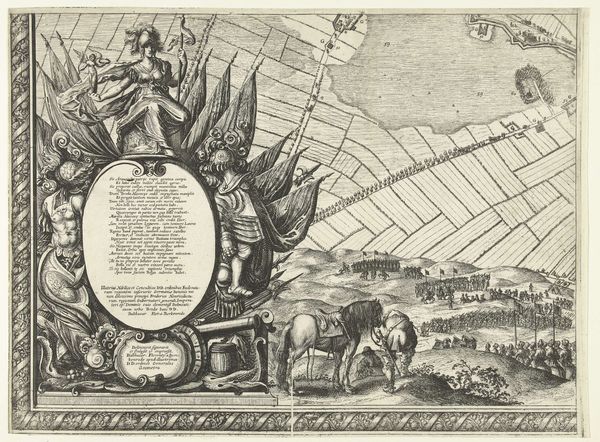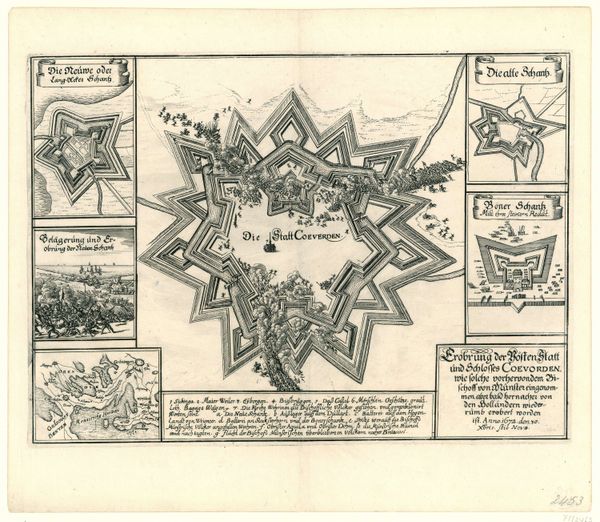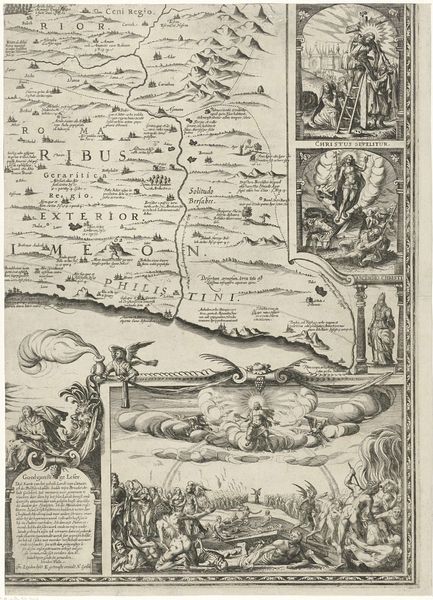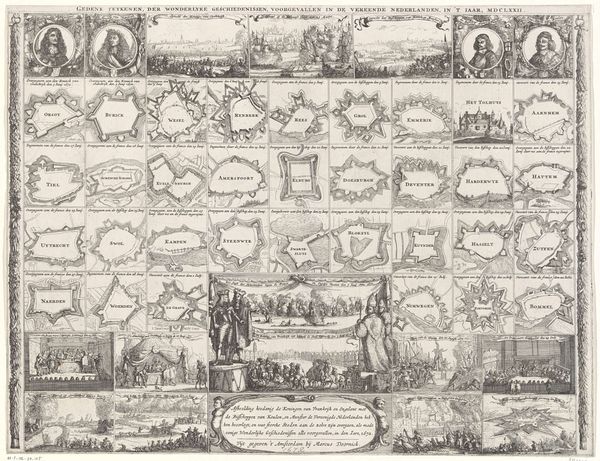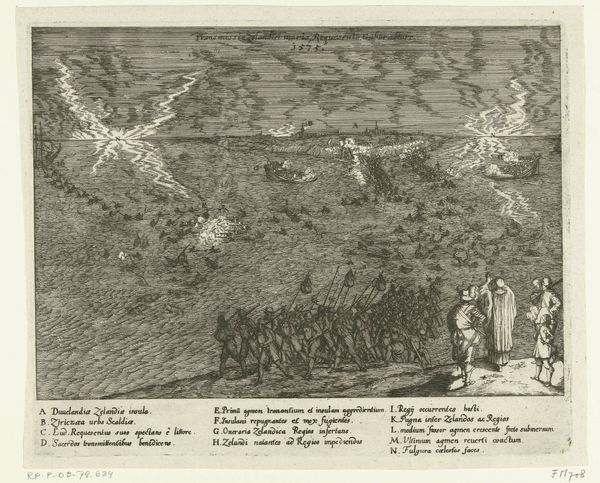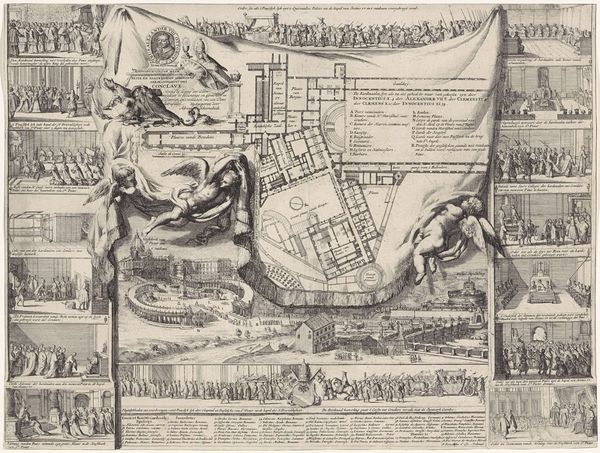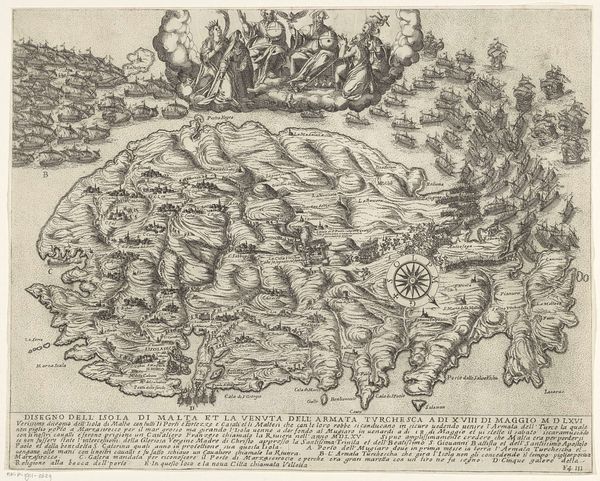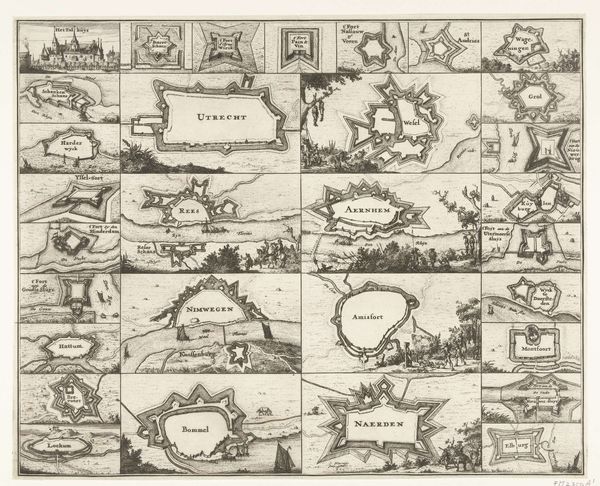
Overwinningen van Rabenhaupt in Groningen in de jaren 1672-1673 1673
0:00
0:00
print, ink, engraving
#
dutch-golden-age
# print
#
pen sketch
#
landscape
#
ink
#
geometric
#
cityscape
#
history-painting
#
engraving
Dimensions: height 595 mm, width 510 mm
Copyright: Rijks Museum: Open Domain
Editor: Here we have Romeyn de Hooghe’s 1673 engraving, "Overwinningen van Rabenhaupt in Groningen in de jaren 1672-1673," housed at the Rijksmuseum. What immediately strikes me is the intricate geometric structure, almost like a puzzle of different scenes and maps within a larger ornamental frame. What are your initial thoughts on the piece? Curator: Indeed, the dominant geometric arrangement, particularly the prominent star-shaped fortress at the center, commands attention. Consider the line work itself, the density of the hatching, and how that articulates space and depth. Are there any relationships that you can see between the visual space of the typography, ornamentation, cartography and historical record? Editor: Well, it seems the layout guides your eye to certain key points - the sieges are illustrated as smaller vignettes around a star fort and surrounding land. The typography gives the title weight, but there are many smaller instances of text as well, that, with ornamentation, help break the print into distinct compartments. Does this strict adherence to geometric form help establish the meaning? Curator: Precisely. The star fortresses were meticulously engineered, which made it more resistant to cannon fire than older curtain wall fortifications. De Hooghe isn’t merely depicting a historical event, but also showcasing the sophisticated technological advancements of the time. Observe how each distinct panel contains varying degrees of hatching to communicate visual weight. What is communicated by the negative space? Editor: That's fascinating, I hadn't considered the role of technology in the art's composition itself. Thinking about the negative space and use of white in the image emphasizes the precision of these fortifications, almost glorifying military efficiency and a new age of engineering. Curator: It seems like there is some relation between Dutch painting genres of the 17th century, like landscape painting, and how the content in the frame relates to one another as an image of the territory under conflict. A strategic and well executed arrangement. Editor: I see how formal elements here create new and unexpected readings when considered under your framework, rather than merely illustrations or a set of coordinates in a map. Curator: By focusing on form, we revealed how the artwork transcends a mere historical document, becoming a commentary on its time.
Comments
No comments
Be the first to comment and join the conversation on the ultimate creative platform.
